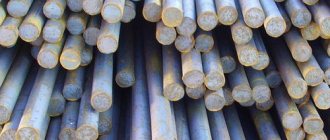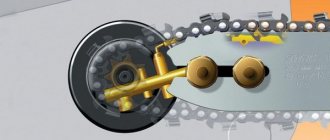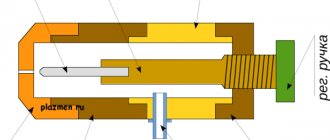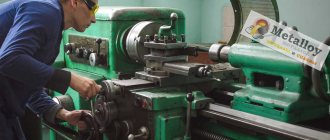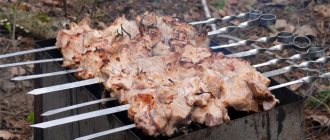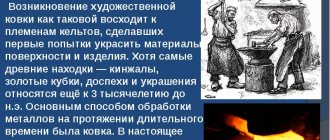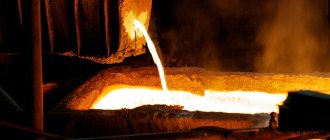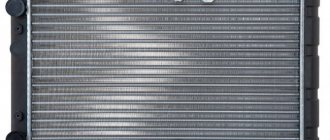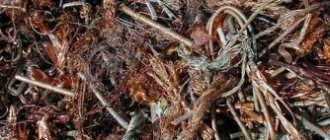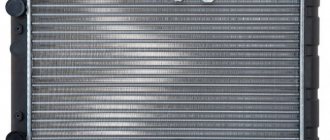Source of additional income
Metal recycling can reduce production costs, reduce the consumption of natural resources and solve the problem of environmental pollution. Finding scrap metal can be fun for anyone. This is both an exciting process and a source of additional income. You can collect it for free. The cost at which scrap metal is accepted at recycling centers varies depending on the region. This type of income brings income to people who collect, sort and deliver it to recycling points, regardless of the territory; searching for scrap metal in Siberia is no different from the territory of the Far East or other parts of the country.
Searching for scrap metal may raise certain questions for a beginner. First of all, you need to decide where to search.
It is worth mentioning the places where scrap metal can be collected constructively:
- in agricultural and farm fields;
- in forests;
- at abandoned landfills;
- on the territory of old repair bases;
- in closed and abandoned factories and enterprises;
- in landfills;
- within the city limits;
- in the countryside.
To find out where to get scrap metal, just study the contents of your own storage rooms, garages, sheds and other rooms where broken appliances are stored.
New life for copper scrap metal, or how high-quality metal is made from recycled materials
Recycling process
After the collection point, copper scrap is sent to special processing plants. There, scrap metal is separated from debris and non-metallic elements on a special vibrating conveyor. After this, the purified copper is sent for further processing.
Depending on how the recycled copper scrap will be used, different processing methods are used:
- cryogenic cooling with air or magnetic separation;
- roasting and smelting;
- acid-salt method and a number of others.
Production of copper sulfate
Recycled copper is also used to produce copper sulfate. This substance is actively used in crop production and medicine. In order to obtain it, copper is first smelted, removing impurities, and then granulated and quickly cooled. In this case, gases are released, and the copper itself becomes porous. Next, the copper is dissolved in sulfuric acid while blowing with air and, finally, the resulting copper sulfate is dried and crystallized.
Copper cathode production
To obtain cathode copper M00, scrap metal containing different amounts of metal is separately melted, bringing it to the state of blister copper. After which, the resulting copper is poured into anodes and electrolytic refining is performed. The result is high quality cathode copper.
Searching for scrap metal in the forests
The territory of Russia stores a large amount of military equipment in its forests. A terrible legacy remains from the time of the battles. Many of these “cemeteries of military equipment” have long been abandoned. It is unprofitable to remove and dispose of such waste. The solution to environmental problems in clearing forest areas of scrap metal lies on the shoulders of enthusiasts and people involved in the collection and delivery of recyclable materials to collection points. Scrap metal in the forest may be unsafe due to the possibility of undisposed ammunition.
Requirements for donated copper
In conditions of demand, copper recyclables, which are handed over to a collection point, are subject to special requirements regarding their quality. These criteria primarily depend on the grade of copper and its type:
1. A1-1/M0,M1:
- Transformer bus. The surface is matte or glossy, there are no traces of oxidation, soldering, paint or insulation. No more than 0.5% contamination is allowed.
- Multi-core cables. There must be no traces of welding or soldering. The blockage is no more than 0.5%.
- Oil submersible cable cores. Surface without insulation or its residues, traces of oxidation or welding. The blockage is no more than 0.5%.
- Current conductors. There should be no oxidation or entanglement with a wire made of another metal. The degree of blockage is no more than 0.5%.
2. A1-1 section/M0, M1:
- Current conductors. Thickness no less than 0.5mm, degree of contamination no more than 0.5%. Traces of oxidation and welding are not allowed.
3. A1-1a categories V.G/M0,M1:
- Transformer bus. Surface cleared of debris. No more than 3% foreign inclusions are allowed.
- Multi-core cables. Wires burned from insulation without soldering residues, the degree of contamination is no more than 3%.
- Oil submersible cable cores. Free from grease, other metals, and traces of soldering. No more than 3% blockage.
- Conductive wire. The degree of blockage is at least 3%. Insertion and impurities of cadmium, beryllium and chromium are not allowed.
4. A1-1a category D/M1, M2, M3:
- Rolled copper. Plates, rods, sheets without traces of oxidation, paints, soldering. No more than 3% contamination.
- Pipes. Cleaned from oxidation, paint and other types of processing.
- Cutting and die cutting. Homogeneous pieces within 0.5x0.5 meters without traces of oxidation and various types of processing. Scrap containing beryllium, chromium and cadmium is not allowed.
5. A1-2 mix/M1,M2,M3:
- Lump copper household and industrial waste. Contains no other metals, free of paint, insulation, and traces of soldering. No more than 3% blockage.
- Tinned current conductors and parts. Clogging 3-15%.
- Gas water heaters. Clogging 8%.
- Conducting wires in varnish enamel. Tinned and nickel-plated parts, conductors insulated with various materials, shavings, presses/packages are not allowed for acceptance.
6. A1-3a:
- Scrap copper in mica or glass insulation. 15-30% contamination.
7. B1-2/M1,M2,M3:
- Copper shavings. No more than 5% contamination.
8. A2-2a:
- Cut diesel radiators. From 20% contamination.
- Copper coils. Clogging from 30%.
Scrap metal collection in rural areas
It is advisable to search for metal waste on the territory of abandoned collective farms and villages, on farms in the ground and along the sides of agricultural roads. Vehicle repairs were carried out on site, and parts were thrown out on the side of the road. To search for abandoned villages, it is better to acquire maps from the 50-60s of the 20th century, compare them with the current location of settlements, and pay attention to the territories that turned out to be abandoned. Scrap metal can be found in former cowsheds or farm equipment repair shops.
Metal in the city
You can collect scrap metal in the city at public transport stops, car or household appliance repair shops. Construction sites, abandoned houses, and garage cooperatives are also rich in it. Garbage containers contain household appliances, electrical wiring, and metal pipes discarded by citizens. Scrap metal in urban areas can even be found in parks and streets, as well as in areas left after demolition of residential buildings, especially in the suburbs or private sector.
In the city limits it is much easier to find places where to get non-ferrous scrap metal, abundant in brass and aluminum. Copper can often be found in trash containers. It comes from electrical wires, some decorative items or utensils, and building components. You shouldn’t think about where to get copper for scrap metal if there are abandoned metallurgical enterprises nearby.
Finding scrap requires time, effort and special equipment. Metal detectors vary in power and size. They allow you to detect scrap metal in a field or forest, but there are devices that can find metal products at depth. As an alternative, powerful magnets (from 1.2 tons) are suitable.
You will need transport for the removal of scrap metal and an area where it will be sorted and processed for recycling. Better to use a shed. It is important to sort the found scrap, separate ferrous metals from non-ferrous ones, and get rid of excess rubber or plastic parts in the found items. Unassembled metal will not be accepted for recycling.
An old non-ferrous metal product gets a chance for a new life. At PK Metal-Snab, copper purchases are carried out daily until 20:00. The company accepts non-ferrous metal from private suppliers and organizations. Offers high rewards per kilogram. To find out what the price for copper scrap is today and why you shouldn’t put off getting additional income until tomorrow, contact the manager, who has three collection points in Moscow or picks up a batch of used non-ferrous metal products at the supplier’s territory. Anyone who knows where to find copper is not left without a stable source of additional income.
| Type of copper | Price per kg, rub |
| Scrap copper glitter | 360-370 |
| A piece of copper | 350-360 |
| Copper mix | 335-345 |
| Scrap copper burner | 335-350 |
| Scrap tinned copper, burnt waste | 315-320 |
Equipment for searching non-ferrous scrap
If a person seriously engaged in searching for scrap non-ferrous metals, he cannot do equipment . Searching for non-ferrous metals with a metal detector will make searching for scrap simpler, but more productive.
Metal detector
A purchase that you will undoubtedly need to search for non-ferrous metals in the ground is a metal detector.
On the modern market, the choice is huge, there are cheap models, and there are expensive ones, costing several tens of thousands of rubles.
But it is not necessary to buy an expensive model; the main thing is that the metal detector has the following functions:
- discriminator - which will allow the model not to react to scrap ferrous metals;
- possibility of adjusting sensitivity ;
- the presence of special modes - “Coins”, “Precious metals”.
The best budget models are:
- Bounty Hunter Tracker IV is one of the cheapest models, the price does not exceed 7,000 rubles. The device is very light compared to other models (1.3 kg), the maximum detection depth is almost 92 cm. There is a discrimination function and 3 general search modes.
- Garret Ace 150 is an inexpensive model, the price does not exceed 12,000 rubles. An easy-to-use device, light in weight, but with an excellent sensitivity range and search depth. There is a discriminator function.
- Garret Ace 250-RUS is an inexpensive model costing up to 15,000 rubles. Compact metal detector, ideal for beginners. Operates on 4 AA batteries. You can adjust the sensitivity level and search depth; there is a universal “All metals” mode; when unnecessary scrap ferrous metals are detected, the device will make an appropriate sound.
How to operate a metal detector:
- before use, it is important to adjust the search depth, sensitivity and tonality (sound signals);
- studying the nature of the sound is necessary to understand what information the device produces;
- it is necessary to move the search coil as close to the ground , and you need to move it not only directly, but also to the sides;
- when a sound signal is triggered (metal detection), you need to look at the display - the target indicator located at the bottom of the display signals the presence of a small object (up to 1-1.5 cm in diameter), at the top - a larger one (more than 3-4 cm);
- After finding the target, you can dig for scrap.
Main sources of copper
People use non-ferrous metals in everyday life, in production and for construction purposes. Copper conducts electricity and is therefore widely used in the manufacture of electrical appliances and wiring. The secondary market values this metal for its physical properties and offers its owners high rewards for purchasing it.
Sources of copper content:
- old tube TV, refrigerator, washing machine;
- winding of a starter, fluorescent lamp, transformer;
- small household items - Turks, teapots, samovars;
- electric motor (inside a cast iron or aluminum housing);
- parts of unsuitable wiring;
- souvenirs - figurines;
- furniture fittings – handles, supports, hinges.
Used copper products allow you to receive additional income and take care of improving the environmental situation in the capital. The process of assessing, weighing and accepting scrap does not take much time. The buyer pays the reward immediately and in full.
How to Get the Best Price for Copper Scrap?
The cost of non-ferrous metal depends on the category, batch size and reception conditions. offers profitable cooperation to one-time and regular clients. Provides instant payment for purchasing a batch.
How to Get the Best Price for Copper Scrap?
- bring a large batch of waste non-ferrous metal products;
- scrap copper of the “shiny” type, which does not contain foreign impurities;
- arrange an appointment in advance and clarify the demand in the secondary raw materials market.
To find out the current cost, do not forget to indicate the volume of the scrap lot in a telephone conversation with the manager. Upon admission, the evaluator determines the category and weight to offer a high reward. The price is calculated individually. It is affected by type, weight, and the presence of traces of chemical or heat treatment.
Who is responsible for accepting copper recyclables?
What is a reception point?
As noted above, obtaining copper through secondary processing is very effective. For this purpose, in almost every city or town there are special collection points for scrap metal
, including copper, from where it then goes to processing plants.
Thanks to recycling, it becomes possible to produce new technology, parts or equipment without using natural materials.
The acceptance of copper scrap is usually carried out by so-called individual entrepreneurs or LLCs, specializing in the processing of recyclable materials. These can be small private firms, large companies, as well as various environmental organizations that have the necessary equipment, professional knowledge and experience in receiving, storing and transporting scrap. Scrap metal is also accepted by individual resellers, however, this method of disposal is not considered successful, since they usually do not have the appropriate license
permitting this type of activity.
How to choose a collection point
To choosing a collection point for the delivery of copper scrap metal
should be approached responsibly. First of all, you need to study the metal receptacles that are located in the city.
What to do if non-ferrous metal scrap turns out to be not copper?
Private sellers confuse non-ferrous metals. Sometimes they cannot distinguish copper from brass or bronze and are upset when they do not receive the desired income. Our customers also confuse pure metal from alloys that contain this material. The cores in the cable are not always made of copper - aluminum is also suitable for these purposes, which is valued lower when purchased.
If the non-ferrous metal scrap turns out to be not copper, our appraiser will definitely inform you about this. He will determine the quality of the metal and offer a good price for brass or bronze.
Regardless of the type and volume of the non-ferrous metal batch, we guarantee instant payment upon receipt and fair weighing of the batch. Come to the point or call our vehicle for removal of a large shipment.
Advantages of PC Metal-Snab
For those who know how to find copper, distinguish it from other non-ferrous metals and clean wires from insulation, we offer a high reward for buying scrap. We appreciate the “brilliance” category very well. We accept scrap with traces of burning or tinning.
Advantages of PC Metal-Snab:
- three large equipped collection points in Moscow;
- your own transport for scrap removal in the capital and region;
- stable work schedule - from 9:00 to 20:00 seven days a week;
- purchasing non-ferrous scrap that turned out to be not copper;
- assessment, weighing and instant payment for the appointment.
To sell your copper stock from old refrigerators, TVs and cables, leave us a request online or by phone. We will meet you at the collection point or pick up a large shipment from the territory. We will offer a price from 330 rubles. per kg of copper scrap. We will help you get a high additional income.
Where can you find copper: places, methods, devices
Finding scrap metal has become a source of income for many. There are people for whom this is a hobby or a way to earn money. This process is labor-intensive and time-consuming. For beginner metal detectors, this may seem like a challenge, but if you know where to find metal, then this task is not so difficult.
Devices containing copper and its alloys
You don't have to go far to mine copper. This does not have to be excavations in the fields using a metal detector. You can take copper from old electrical appliances. Because repairing old appliances takes a lot of time and money, they are often thrown away. But before that, it is possible to obtain scrap metal from them, which, after processing, is used to make pipes, wire, profile sheets, or to replace some elements for devices.
Copper alloy can be easily found:
- In bearings, radiators, motors, gears.
- In old jewelry and decorative elements.
- In plumbing.
- In kitchen utensils.
- In radiators and computers.
Copper itself can be found in the following devices:
- Up to one and a half kilograms of scrap metal can be found in a tube TV.
- Almost three kilograms of copper can be taken from the engine of an old Soviet-style refrigerator.
- Smaller amounts of copper are taken from washing machines, hair dryers, and microwave ovens.
- If there is a starter from a vehicle that is unsuitable for repair, then metal can also be extracted from there.
From these devices, you can’t take much copper, but these devices are widely found.
Where to look?
In order not to waste time searching, you need to know in advance where to get the metal. Such places include:
- Fields. You can often find broken equipment there.
- Abandoned factories, often containing a lot of aluminum and copper.
- Car repair centers. Finding such an abandoned place is worth a lot. Where else to look for scrap metal? The convenience lies in the fact that all the broken parts are put in one place and sometimes just one bolt can pull out a kilogram.
- Dump. This place is suitable for those who are beginners and do not know where to search for copper for change. This is where you can easily learn to distinguish between types of metals, so as not to rent them out at the same price in the future.
- Abandoned landfill. In such places you can easily find shell casings, targets and dummies of equipment.
If you choose a field for searching, it is best to search with metal in the spring, so as not to collide with workers and not create problems for each other.
How to properly collect colored scrap
Almost all metal detectors streamline the scrap collection process. To carry out this process, you need to optimize your activities to the maximum. To do this you will need:
- Decide on a system for collecting devices that are unsuitable for further use.
- Take care of the delivery of collected scrap metal to the dismantling point. To do this, you need a vehicle on which transportation will be carried out. Take care in advance of the place where all the scrap metal will be located, because there will be quite a lot of it.
- Develop a disassembly process. To do this, you need to purchase a special tool to separate the metal from other materials and begin sorting.
- Arrange rapid transportation of metal to collection points.
You should also know that prices for non-ferrous scrap vary depending on the time of year. Since the winter period is difficult for metal mining, the price is higher than in the summer. Therefore, it would be more advisable to hold on to the existing material until “better” times.
Copper production method
Obtaining copper, even in industrial conditions, is a very labor-intensive process:
- At the initial stage, the metal is crushed, after which it is cleaned of impurities of other rocks. After purification, the starting material is fired, after which a solid substance can be obtained - cinder, which in turn undergoes melting.
- After this procedure, matte is obtained, which contains up to 50% copper.
- The manufactured matte is enriched with oxygen, air blowing, and quartz flux.
- Only after these procedures can blister copper be obtained; it is melted and passed through an oxygen melt.
- Finally, the resulting material is treated with sulfur oxide, after which the percentage of copper is 99.9%.
How to get a high price for scrap metal
Every scrap hunter wants to sell the scrap metal he finds at the best price for himself. As mentioned above, you can search for metal in the summer and sell it in the winter, when prices rise. But if your priority is to make a profit regularly, then it is best to look for collection points that offer prices higher than those of competitors. Do not also forget that the cost depends on the quality and composition of the material that is being rented. The highest price is offered for pure copper.
oxmetall.ru
Video: copper search
Copper is in great demand today. Many collection points for non-ferrous metals are willing to pay 250-300 rubles per kilogram of this reddish metal. It is quite expected that many people are wondering where to look for copper scrap metal . Some people take the easy route - they steal from dachas, cut off wires and cables. At best, they pay for this with money, at worst, with freedom or health.
Therefore, it would be much more reasonable to search for abandoned, unwanted scrap metal. Fortunately, if you approach this issue thoughtfully and wisely enough, finding precious copper will not be difficult at all.
We immediately suggest watching a video where the author explains where you can get copper:
Where to look?
Many people who know a lot about collecting non-ferrous metal know exactly where to look for copper scrap metal. First of all, this is a city dump. We do not recommend looking for non-ferrous metal in this not very pleasant place. But hardly anyone will have a complaint against a person who is looking for the copper he needs in the mountains of various, useless rubbish, unless, of course, there is a “garbage mafia” of his own.
In addition, copper can be found in power plant service stations. Here you can find a decommissioned cable, and if you’re lucky, a damaged and useless transformer. But most often the employees themselves, knowing full well about the cost of copper, mine it and sell it on their own. However, trying is not torture. Try to establish relationships with the workers, inspect the territory and the transformers found and try to bargain for them for a nominal fee. If you are lucky enough to pull this off several times, you can make good money.
Old small transformer
Why copper is dangerous
Simultaneously with the purification and improvement of moonshine, soluble copper oxides are formed in copper moonshine stills, which are toxic and can greatly harm the health of drinkers. To prevent contact of copper salts with food, copper utensils are coated with a layer of tin (tinned). But tinned copper in moonshine stills is of little use - it does not come into contact with vapors or phlegm, and no reactions occur. Dead end? Not really.
Copper oxides can enter the distillate only at the moment of condensation of alcohol inside the copper refrigerator - before this, non-volatile copper salts either settle on the helmet of the alambic and the copper components of the reflux condenser of the mash column, or are washed away by phlegm back into the still. Therefore, using a tin-plated refrigerator (or one made of stainless steel) solves the problem described above without harming the overall cause. Moreover, a copper refrigerator, which has been proven in laboratory studies, has a minimal effect on the removal of DMTS (but has a positive effect on the conversion of smelly dimethyl sulfide (DMS) into a less aromatic sulfide).

